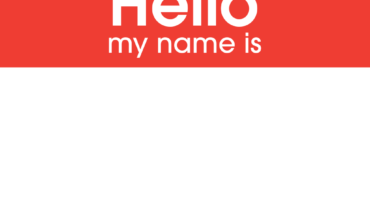Q&A with Jessica Clark
Q: Straight from your site at the Center for Social Media at American University, I stripped this language: “In today’s noisy and often confusing news environment, a central role for public media is to provide credible, reliable information to a broad range of citizens.” How do you define public media and social media in plain English? Are they synonymous, or how do they differ?
A: They are not synonymous. The way we use to define social media, when the center was started, was social issue media that was concerned with important things that are central to the democracy. Now, social media means something very different. Plainly put, it is media that helps people to communicate laterally with one another as opposed to just receiving messages that are broadcasted to them. In terms of public media, because there are so many new platforms and tools, we have tried to come up with a definition of public media that gets at the guts of its mission as opposed to any particular medium. So most people when you say public media think of NPR and PBS, but we define it as media for public knowledge in action. It helps what we call publics form. Publics are groups of people who are concerned about a topic or an event or a problem and they need to use media platforms to learn more about it and to help solve the problem.
Q: You wrote the other day on Twitter that you’ve always been interested in the intersection of new media and politics, and public media seemed like an intriguing nexus. What going on right now at that nexus is exciting you most?
A: There is a lot of interesting collaboration on the community level and also across media platforms that is really promising. Bringing people together—experts in a particular topic area who can talk about it, not just for print but across audio, video, Twitter. Also, public broadcasters are trying to make the transition to being community builders. It’s hard for them because it is not what they are used to, but I think it has a tremendous amount of potential.
Q: Jessica, you must be having fun promoting your new book along with co-author Tracy Van Slyke. It’s called Beyond the Echo Chamber.
A: Yes, we have our big New York book party tomorrow night, so I feel like a real author!
Q: In both the book and on your blog, you explore how progressive media makers and outlets can transform themselves. When you feel inclined to give out some of your secrets, what is your favorite 20-second tip for media makers who may be new to the notion of engaging a community?
A: We talk about the four network layers. Basically, use all of the networks that you can—individual users, networked user groups, institutional networks and even networks of media outlets. Think about it as fostering a discussion as opposed to speaking from on high. This comes from a democratic impulse that many people have had for a long time. You think about Howard Zinn or Studs Terkel, who understood the power of connecting with ordinary people and having a diversity of voices. So it has been a strain in progressive media and in politics for a while. The new tools make it so much easier and more effective. Other people, sometimes journalists, are used to being in charge of the content, and for them it can be a hard sell.
Q: You write about measuring the impact of a story and its reach. Would you identify that as one of the largest areas of untapped potential for media makers?
A: People have a narrow view of how you assess an impact of media, and it’s centered around how many people saw the thing and how much they paid for it. Which is good, because of course people need to get paid, and a lot of people are not getting paid, which is part of the crisis in journalism. But there are many other ways to consider the impact. How are you engaging people? How are you including people? Have you included all of the stakeholders that care about your story or who may have an opinion? How are you reaching influentials and what does that mean about the potential impact of your piece of media? How relevant is it and to whom? If you measure these things, it can be a central part of your strategy as a producer and really deepen your understanding of the potential of your work.
Q: What challenges do you see on the horizon for production companies and content creators? What could they be doing better and spending their time on?
A: It’s very important to know how to position yourself so that people will find you. There’s a lot more noise out there and a tremendous amount of production happening. Although that’s exciting it’s also overwhelming. So really knowing who is going to care about your work and how to reach them. It’s also worth thinking about how to invest as much in conversation as in content creation. Think about the evolution of your media project well beyond the time you’ve finished it, or maybe even think of it as a work in progress and what that might mean as it rolls out over different platforms, different audiences, different spaces. Don’t assume just because you find the topic interesting that others will too. You have to think about how it will be received and where all the possible points of connection are. In the old days there was a pyramid and you tried to reach the top—shown on PBS, seen in film festivals. But it’s a much more lateral space now; you can have many moments of connection and recognition with people if you are thinking about things properly.
Q: What can attendees at the We Media Miami conference expect to hear at your panel Thursday morning about public media?
A: We will be bringing in some examples of some really revolutionary public media projects, including Not In Our Town, that demonstrate the principles that we’ve been talking about. Then we’ll be asking the audience to share the tools that they are using to assess impact and the tools that they want to see. We are hoping to gather a lot of feedback and then start building new tools that will demonstrate the impact of social issue media.



